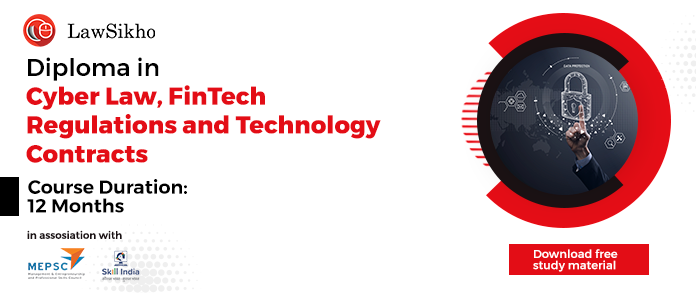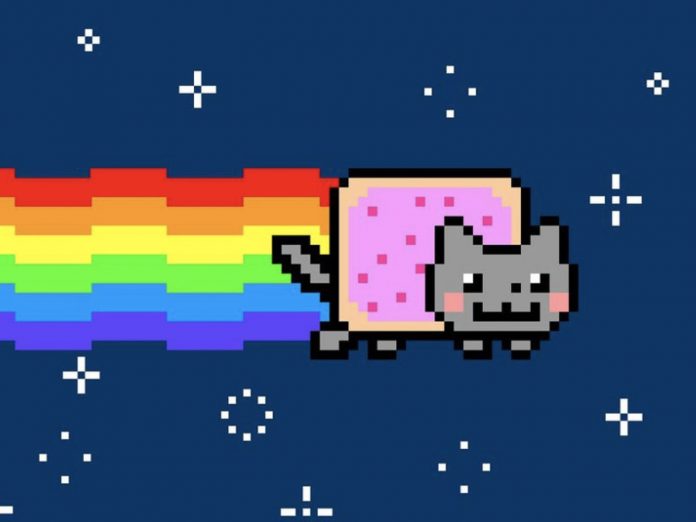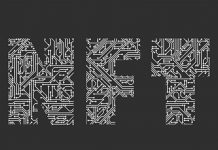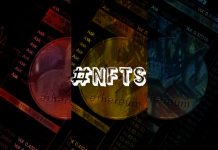This article is written by Akshita Rohatgi, from Guru Gobind Singh Indraprastha University, New Delhi. It explains what crypto collectables are, how they interact with the current law, especially intellectual property rights, and their future in India and across the globe.
This article has been published by Diva Rai.
Introduction
In 2017, ‘crypto kitties’ was just a blockchain game that involved buying and breeding two virtual cats for a unique, collectable offspring. It used a technology called a Non- Fungible Token (NFT) to create a one-of-a-kind crypto kitty that belongs exclusively to its creator. Within a year, it went on to become a $400 Million market. The most confusing part to observers was that these ‘breedable babies’ have no inherent value other than what gamers are willing to pay for them.
Since then, NFTs have escalated to a craze in the west, selling at absurd rates. A GIF of the Nyan cat sold for 300.00 ETH ($580,000). Jack Dorsey’s first tweet sold for $2.9 Million. In India, NFTs have not taken off owing to the lack of clarity on the legality of cryptocurrency and no regulatory oversight to prevent scams. Even so, Amitabh Bacchan sold a ‘limited collection’ of NFTs of his rare digital collectables with posters, musical narrated verses and other ‘undisclosed gifts’. On the first day itself, it received bids worth 3.8 crores.
This article aims to explain and contextualize NFTs for the layperson. This sets up the groundwork for explaining the potential of this technology, the problems and regulatory concerns surrounding it and ultimately deciding- is it really revolutionary?
Explaining NFTs
The word ‘fungible’ refers to something that is interchangeable and can be substituted by another- like a rupee. The value of one rupee is exactly the same as the value of another rupee. In contrast, non-fungible is something that can not be substituted by another.
In a nutshell, NFTs or non-fungible tokens are certificates that authenticate the ownership of a digital file. This digital file may be a picture, a meme, an art video, a GIF, a tweet, a video game item, or any other digital file. These tokens of ownership are stored on the blockchain, a highly reliable technology. These blockchains are accessible by anyone on the internet who wants to authenticate if a person truly owns an NFT. They are sold using various cryptocurrencies, the most popular one being Ethereum. This is because, unlike Bitcoin, there is a larger scope of programming and customization, which allows built-in smart contracts.
Unlike traditional Intellectual Property law, which focuses on excluding ownership from others, NFTs bring in ‘artificial scarcity’. Anyone can still download the Nyan cat, but NFTs make your copy of the Nyan cat unique and something that can be authenticated by anyone, to be the ‘original’ Nyan cat. Your GIF is worth more than any other downloaded copy. It does not stop others from reproducing it. Instead, virality ends up helping the NFT by increasing its value.
The appeal
The uniqueness of the digital file of the NFT gives value to it. This is also why their value varies considerably and depends on the demand for that particular file. This is similar to the economics behind an original painting, a historical artifact, or simply an original Nike shoe. There may be a billion copies of Mona Lisa, but only one is the original. Whatever buyers are willing to pay for it becomes the value.
Digital art
Before NFTs became popular, the work of digital creators was easily reproducible and watermarks could be removed. Every copy made was devaluing the original art since the original was losing its uniqueness and scarcity. Traditional Intellectual property laws like copyrights failed to stop this.
With the advent of NFTs, artists have a way to say that this file of the art is original, authentic, and unique. Fans who support these artists and encourage their growth buy copies of their art to show it as authentically theirs, while getting something in return.
Bragging rights
The appeal of NFTs for creators and influencers as well as in the art world is huge. This art may be in the form of a digital painting, a quirky video or a GIF from a viral meme. Anyone can download the Nyan cat, but the creator’s original is held only by @0x7Eb28B2f14A59789ec4c782A5DD957F9C8F33f6b. This gives bragging rights to the owner to say that they own the original file.
With platforms like Twitter trying to link crypto-wallets with users’ profiles to display them under the “NFT” tab, this gains even more appeal. Users would be able to prove themselves as the real owners, as opposed to a random person who has a screenshot of the same art.
Collectors
This is not to say that NFTs aren’t limited to the mega-rich. They’re not all expensive enough to be only for those who have 3 million to spend on a tweet. Collectors buy NFTs hoping to sell them at a higher price in the future. These investors and collectors who understand art and its value in the long term. For them, it is about appreciation of its value. As the demand for a particular NFT, eg: the Nyan cat grows, the buyer may re-sell it for an even higher price.
Supporters
Most of the youth buying NFTs consist of those who want to ‘own’ the original. For instance, a random .mp3 song downloaded on the internet may be the same file as the original. However, the vinyl CD still gives the owner the satisfaction of knowing that they have the authentic version and of owning it.
For instance, take the auction of NBA ‘collectable’ images. It amounted to a total sales of $123 million. Fans bought it just for the satisfaction of having the collectable images for themselves. This is also for those who want to own cheap collectables. Marvel sells a box for as low as $13.
This support is sometimes encouraged by the creator artist. They may privilege buyers who buy their NFTs. Take an example of a supporter who holds an NFT of an artist’s song. The artist could now prefer the NFT holders for front-row tickets to their show. Some of this is already happening- Digital artist Odious allowed only those who held one of his NFTs to bid on his new collection.
Gamers
Gamers often buy scarce gaming items to make the play better or simply to show off. Since these items are unique and scarce, the price goes up. In the case of crypto-kitties, the first generation of kitties was sold in an auction that made around $600 per week for a year. Thereafter, the first generation kitties were bought and bred to create offspring with the parent’s ‘cattributes’. Gamers looked for ‘rare’ traits to make their collectable rarer. As more users buy the ‘rare’ and expensive cats, they become less rare, which drives down prices. Some went into the game for the kitties, others for the thrill of earning millions off guessing which kitty traits will be considered most ‘desirable’.
The significance
Rights without precluding ownership
Cyberspace today is highly centralized and most of the traffic is routed towards the 5 BigTech organizations. Intellectual property and copyrights on the internet have not succeeded in eliminating piracy. This is largely due to the fundamental reason for the popularity of the internet- the fact that it is free.
NFTs are revolutionary because the technology is rooted in something that is a need for today’s day and age. Traditional Intellectual property law is based on precluding ownership and the right to enjoy something from others. NFTs work the opposite way.
The information can still travel freely, everyone can still see Jack Dorsey’s first tweet. Instead, the more an NFT is shared and enjoyed, the more its popularity grows. The more does its value. To illustrate, take the example of art dealers. They buy paintings that they think are likely to be re-sold for a much higher value. In the same way, the more the popularity of the NFT grows, the higher would be its value to a prospective buyer.
Challenges to BigTech
NFTs represent the innovation and myriad possibilities blockchain technology brings to the table. At the core of it is the challenge to the dominance of big tech and giving control back to the creators. Yet, the internet needs money to function. Currently, this business model is sustained by advertising because it keeps the information free while giving the capital needed for information to grow. The 5 main BigTech organizations- Amazon, Google, Facebook (Meta), Microsoft and Apple control these advertising networks.
Creators and digital artists, those who generate content on these platforms do not get paid for it. Instead, corporations profit off of this content since it gets more views. More views lead to more people seeing more ads. For instance, an Instagram influencer makes videos that encourage more and more people to spend time on it. The company generates ad revenue and profits off the extra time its followers are spending on the app. The influencer barely gets a share, if any.
NFTs are not controlled by these corporations. They are instead stored on a Blockchain- a decentralized, open and transparent platform. NFTs are touted as means to give control back to the creators. If these influencers and creators do not abide by the rules of their platform, eg: Instagram, they may be kicked out with no recourse. Along with this, they lose the means to interact with their supporters.
NFTs allow them to interact directly with their supporters and give them an independent source of income. The most prominent example is the art world. Usually, digital art can be downloaded, copied and transferred by anyone who views it, leaving the creator without any control or recourse. NFTs can change that.
According to Jessica Salomon, a fine art professional, NFT are accessible by the global community and available at various NFT marketplaces that take barely, if any, cut. This makes them better than the standard form of art galleries and exhibitions where galleries and agents take a major cut. Now, artists can interact directly with customers since blockchains create an unalterable record of this entire transaction. This spurs viral fan communities, increases transparency and encourages better interaction between creators and buyers. This interaction takes place across social media platforms, not just one, while maintaining NFTs as the main source of revenue.
By eliminating the powerful middlemen- these BigTech corporations- artists and creators can be better off. According to artist Pplpleasr, “Crypto/NFTs changed my life not only because of the money and investing opportunities it exposed me to, but also because of a welcoming community of passionate people who aren’t afraid to challenge the status quo.” So, artists and creators would not need to exclusively rely on third-party platforms to monetize their content.
Interaction with Intellectual Property
A person who buys an NFT per se does not, in a strictly legal sense, ‘own’ the legal rights to the file. Unless other intellectual Property Rights (IPR) associated with the NFTs are transferred, they rest with the person who created them. So under the law, the rights to a painting are still considered to be ‘owned’ by the painter who made it. They usually hold the intellectual property rights like copyright or design to reproduce it.
Usually, the copyright owner still reserves the right to reproduce it. So essentially, the only thing an NFT gives its holder is the satisfaction of ownership and bragging rights. From the IPR perspective, NFTs don’t change anything unless copyrights or other IPR are transferred. The holder simply has the right to claim the file as ‘theirs’. This does not exclude others from the file- anyone on the internet can still see the painting and download it. However, the holder of the painting is the one with the NFT. Anyone on the internet can see that the ‘authentic’ copy of the file or art rests with its holder.
Tips for buyers
One needs to keep in mind that when buying an NFT, they’re not just buying the file. They are essentially buying a token that certifies their ownership of an NFT. While NFT transactions do involve the sale of NFTs, they also usually involve the sale of other associated legal rights. For instance, a buyer usually buys the right to display an NFT on a page or the right to use a video game item in the game. Thus, the transaction may also involve the transfer of intellectual property rights. This is why buying tweets as NFTs (even if it is Jack Dorsey’s) is not appealing to most, since you don’t get any rights associated with it.
Thus, it becomes essential to know the details of what exactly the contract says before spending on an NFT. A buyer should know which rights (intellectual property or other) they’re getting with the NFT if any. If one wants to use the NFT on a specific platform like a website, app or video game, it is essential to reflect that in the contract.
NFTs use smart contracts which usually contain a clause to ensure that whenever an NFT is sold or resold, a percentage of the profit goes to the original creator. It is important to know what percentage would go to the original creator since it might be a significant cut.
The future
Digital identity
In a time when BigTech is constantly under fire for influence in elections, handling of personal data or centralizing power, NFTs prove particularly useful. When we think of Digital Identity, we think of Facebook and LinkedIn profiles. With the advent of NFTs, each person can have a unique profile on a blockchain instead of a centralized entity. Various companies are already working on the creation of blockchain-based digital identities.
These blockchain-based systems allow the end-users the reins. We can keep our credentials, data and privacy safe in blockchain wallets and only allow access to what we consent to. There are ongoing conversations about the use of blockchain in finance, healthcare or simply various social accounts. This shows the enormous potential of blockchain technology.
Digital passports
Often passports can be copied, hacked or tampered with. This leads to significant security and privacy concerns. NFTs can be used to create unique, authentic digital IDs like passports. Blockchains create an unalterable trail that is almost impossible to modify and manipulate. So, these passports are more secure. This proposal has been widely discussed in the case of vaccine passports, in the context of the ongoing pandemic.
Authentication of physical goods
In early 2020, French company ba&sh started a scheme to provide NFT based digital passports for all their products. So, anyone who wants to re-sell their accessories could sell their items along with their digital passport. This can be used to authenticate different items, especially second-hand ones, to make sure it isn’t fake. In normal second-hand purchases, buyers ask for receipts or other forms of paperwork to certify the goods. Using blockchain for these receipts, transferable to each new owner, is favourable since blockchain-based receipts can not be faked easily.
Gaming
Games like Minecraft allow users to create their gaming world since they’re highly customizable. Players often spend thousands of dollars on visual customizations like ‘skins’ that offer no improvement to the actual game.
These ‘skins’ could be minted and sold as NFTs. Take a step further- what if users could sell their gaming world as an NFT? Even more, what if these designers were interoperable and could be transferred from one game, like Minecraft, to another? What if their entire avatar could switch from one game to another? The teenager playing the game would not lose all their money in one game, and could maybe even profit off of it. This would be a complete upheaval for the gaming industry. This could be made possible by NFTs.
These illustrations are merely the tip of the iceberg. NFTs can open avenues previously unimagined to all of us. However, like any new technology, it all depends on the acceptance and openness to it.
Environmental concerns
There is a catch. Cryptocurrencies are very power-hungry by design. As a consequence, it leaves a massive carbon footprint. For generating bitcoins (i.e., ‘mining’ coins) computer softwares are run to solve a puzzle. Then, the answer to this puzzle and the generated coin are added to the blockchain. This is the way to generate more bitcoins, and is widely used. However, this entire process sucks a lot of energy.
Additionally, mining cryptocurrency works efficiently only on a big scale. So, an individual server is as good as worthless. A set of computers run these algorithms in big server rooms and waste a lot of energy. To fully grasp the scale of this, the fuel used for this network till 2018 can be compared to the amount that countries like Ireland and Australia consume in a year. This poses great environmental concerns.
Regulatory concerns
Appropriating copyright
There is no mechanism to prevent the minting of copyrighted works- images, texts, GIFs, etc. Copyright laws across the globe prohibit ownership, transfer and holding of NFTs but this is hard to implement. So, a buyer who does not buy the NFT from the owner might face a copyright infringement lawsuit. Due diligence to verify the owner’s authority to sell the NFT becomes essential. This is burdensome for the buyer.
Moreover, a huge chunk of digital art consists of modifications of another image. For instance, a digital artist is drawing a picture of a celebrity, using another picture as a template. If the artwork is not a substantial transformation of the image being used, it could be treated as copyright infringement. This would be more likely to lead to a lawsuit since the transfer of NFTs is for commercial purposes.
Especially with art made by fans, there needs to be substantial transformation since big artists and their labels often have huge resources they may use in a lawsuit. If the NFT sells for millions, it increases the likelihood of a lawsuit. Even if the defence of ‘fair use’ is being used, it still has various risks. To avoid this, permission in writing from the source of information would help.
Scams
The most apparent problem with NFTs is catfishing and duping. Impersonators often make accounts that look like the original and sell the creator’s work. Since this work is easily accessible to all, anyone can pretend to be the artist to dupe another. This is a major concern especially for smaller artists who do not have a ‘verified’ badge on their social media profiles. By the time the real artist finds out, too much damage is already done.
Better authentication mechanisms by host sites would go a long way in minimizing, if not eliminating these scams.

Market fluctuation and manipulation
Since there is no central entity controlling cryptocurrencies, they are bound to fluctuate. Just like any other market, the NFT market works on the principles of demand and supply. In the case of NFTs, the price of a particular asset might go up and down quickly, based on trend and virality. For instance, if the Nyan cat is making rounds in memes again, its value will greatly increase. However, due to the nature of social media, a given trend may abruptly and quickly. The meme may stop circulating as much, decreasing the value of its NFT. This makes it highly risky for investors. This is perhaps the most challenging part since there is no way to regulate this decentralized entity.
A group of people manipulate the market by purchasing a particular NFT to drive the demand up. This skyrockets the value of the asset and others buy it hoping for good value. Instead, they are left with worthless NFTs. One way to prevent this is to conduct due diligence and see the transaction history. If it is just a few buyers who sell and resell the same NFT, it is better to walk away.
Money laundering
It is no secret that physical art auctions are used to launder money. NFTs work the same way. Their value is subjective and determines its value in the buyer’s eyes. So, a drug lord can easily buy their own NFT or ask a third party to buy it for ludicrous rates. After this, all the drug lord needs to do is resell the worthless NFT, keep the profits, and tell the Income Tax Department how they made the drugs money through digital art.
This is why according to a 2021 article by Medium, laundering money through NFTs is embarrassingly simple. One simply needs to place money from their illegal business into a “delegitimize business, counterfeit art collection, or more recently, ludicrously overpriced digital art.”
India
Present
As pointed out before, NFTs in themselves do not confer any IPR to its holder. It is important to word the contract such as to transfer IPR too. In India, copyrights are governed under the Copyright Act, 1957. It covers original literary, dramatic, musical, artistic work and confers protection for 60 years after the death of the author. NFTs can be registered and protected under the same law. It prescribes up to 3 years of imprisonment and a fine of up to 2 Lakh for any infringement of this copyright.
On the other hand, artists selling NFTs take inspiration from various sources including media. Since NFTs are sold at high rates, this may cause copyright disputes with the owner of the media content. For Instance, DC comics has banned digital artists from selling art inspired by their characters. This is a challenge for artists relying on NFTs for the monetization of their art.
Future
We have seen the potential that this technology holds. India loses out on exploring this potential if it does not provide a favourable regulatory environment for crypto-capital to grow. NFTs and other crypto assets need to be regulated in a way to balance the rights of the buyers as well as the sellers.
Overregulation might drive crypto capital away from the country. If the regulation is ineffective in preventing misuse, scams would cause consumer confidence to wane. The problem lies in finding the right balance in regulating this novel technology.
Here, it might be useful to look at how other jurisdictions are grappling with the same issue. Countries like Japan are leading in the race for developing legal frameworks to encourage blockchain technology and minimize misuse. The recent amendment to the Japanese Payment Services Act (PSA) and the Financial Instruments and Exchange Act (FIEA) has legally defined what crypto-assets are and given recognition to cryptocurrency exchanges. The law requires mandatory registration and licensing of these exchanges. This mechanism works under the direction of a self-regulatory body, the Japan Virtual and Crypto Assets Exchange Association (JVCEA). The Indian government can take inspiration from this to make laws suited to the Indian populace.
Allowing widely used and trustable cryptocurrencies used for trading NFTs is the way to encourage this technology to grow. As of November 2021, the government intends to ban all private cryptocurrencies except a few. It is unclear whether Etherum, the most widely used cryptocurrency for NFTs, is on this list. Since the draft of the Cryptocurrency and Regulation of Official Digital Currency Bill, 2021 has not been made public, guessing which cryptocurrencies would be legal is mere speculation.
Conclusion
NFT technology could become something to reflect our identity, as we choose to portray it, on our digital platform. In a world of concentration of power, this decentralized model of operation could give us back our security, privacy and power to consent if we allow it to. It has the potential to revolutionise the internet itself.
Coming to India however, all NFTs are a shining example of how India is being left out of this booming industry because of the hesitancy in accepting cryptocurrency. The question of whether it is really revolutionary, or just a fad simply depends on what we make of it. If India makes appropriate changes in its cryptocurrency draft bill, NFTs could take hold in India. It would be in line with the global community in interacting and developing regulations around this new technology. If not, it would just be a door slammed in the face of potential.
References
- Vaccine Passports Powered by NFT Technology? | NYVTX
- Cryptocurrency in India: to be or not to be – iPleaders
- Using NFTs To Create Your Unique Digital Identity (entrepreneur.com)
- Memes for Sale? Making sense of NFTs – Harvard Law Today
- Kayvon Tehranian: How NFTs are building the internet of the future | TED Talk
- NFTs, explained: what they are, and why they’re suddenly worth millions – The Verge
- https://www.nhbr.com/nfts-and-intellectual-property/
- Marvel Launches Marvel Mightys NFT Collection featuring Captain America – BeInCrypto
- The climate controversy swirling around NFTs – The Verge
- Memes for Sale? Making sense of NFTs – Harvard Law Today
- CryptoKitties explained: Why players have bred over a million blockchain felines | VentureBeat
- Nyan Cat | Foundation
- NFT blockchain drives surge in digital art auctions – BBC News
- NFTs and intellectual property – NH Business Review (nhbr.com)
- How to Invest in NFTs | The Motley Fool
- Scams Now Plague The NFT Space. What Can Stop Them? (forkast.news)
- 5 business use cases for NFTs (techtarget.com)
- The History And Future Of NFTs (forbes.com)
- What Is An NFT? How Do NFTs Work?
- Non-Fungible Token Definition: Understanding NFTs
- How NFTs Can Disrupt Gaming | Built In
- NFTs & Cryptocurrencies: The Legal Context in India (asarnetwork.com)
- How to Launder Money With NFTs. For educational purposes, of course | by Isaiah McCall | Yard Couch | Medium
- 12 Common NFT Scams & How to Stay Safe – NFT Education
- Japan’s Cryptocurrency Regulation Updates: What You Need to Know
LawSikho has created a telegram group for exchanging legal knowledge, referrals and various opportunities. You can click on this link and join:
https://t.me/joinchat/L9vr7LmS9pJjYTQ9
Follow us on Instagram and subscribe to our YouTube channel for more amazing legal content.
 Serato DJ Crack 2025Serato DJ PRO Crack
Serato DJ Crack 2025Serato DJ PRO Crack










 Allow notifications
Allow notifications



